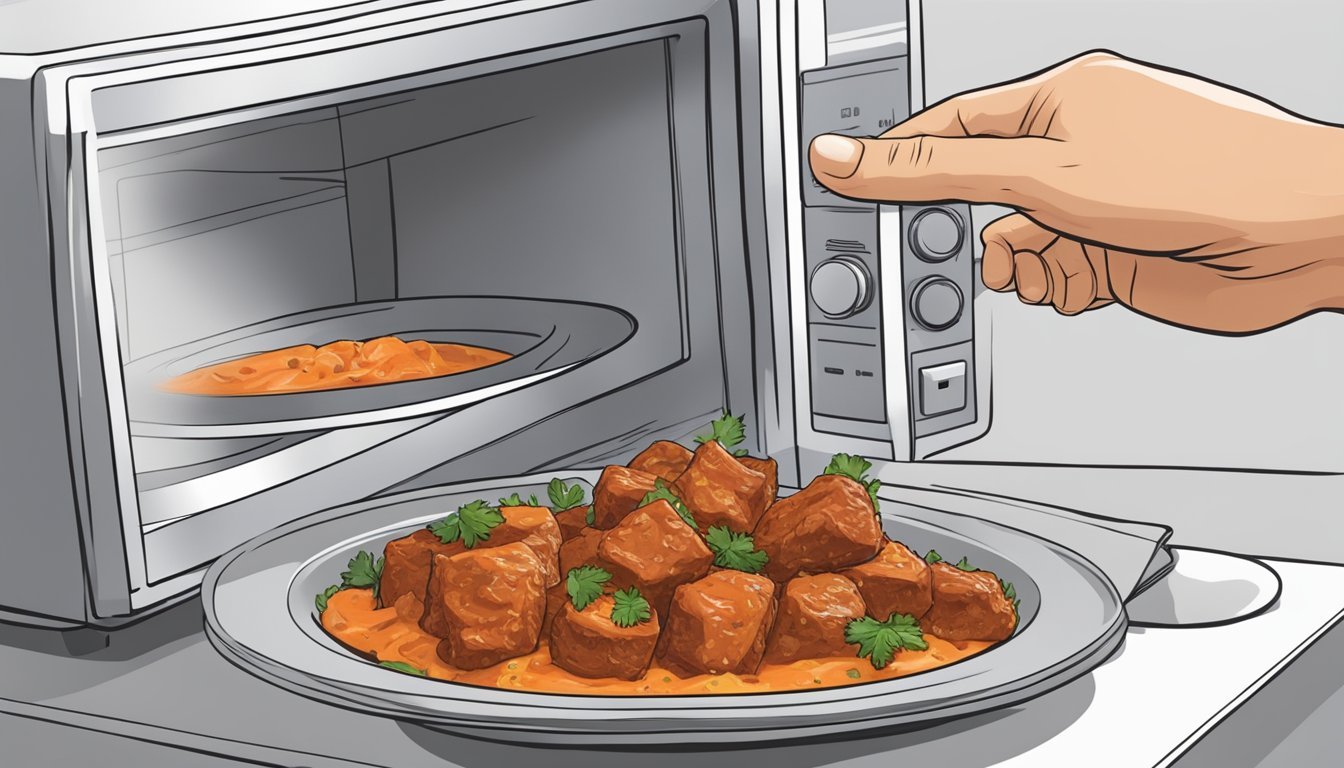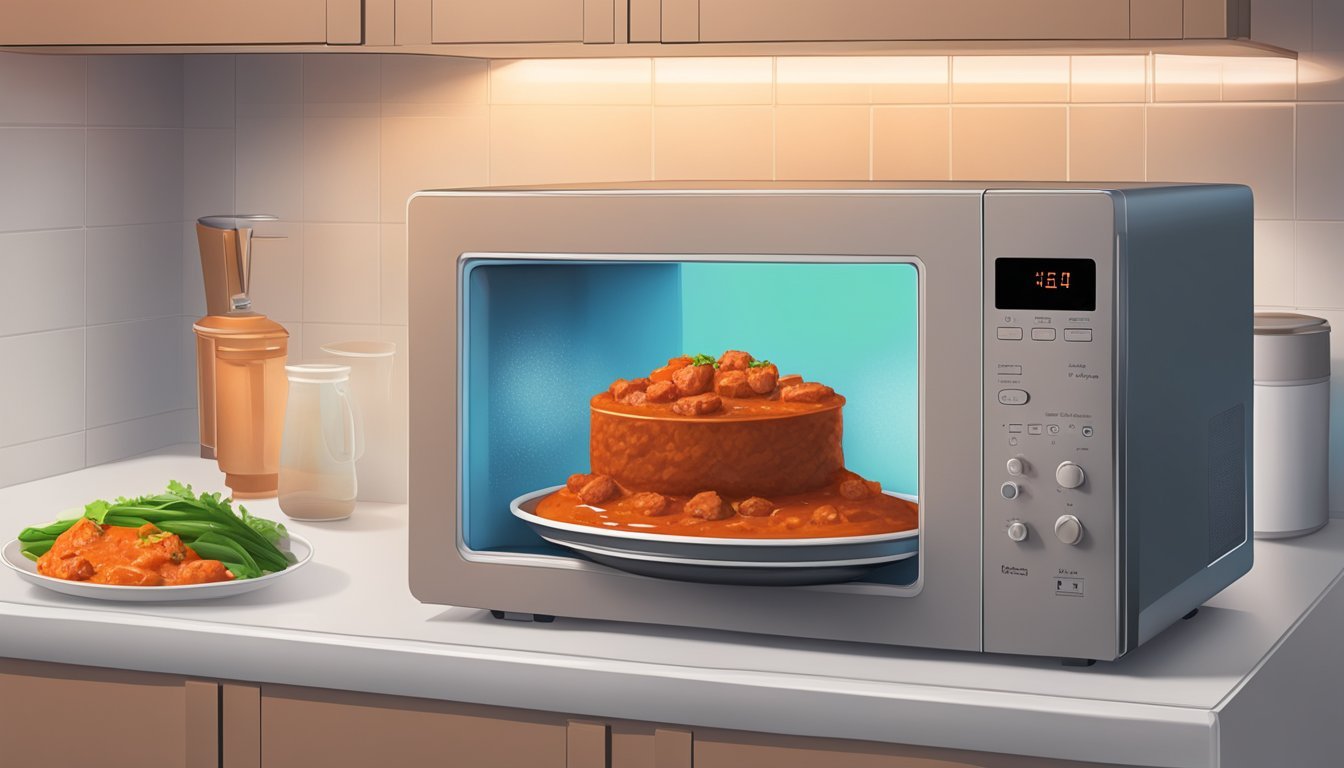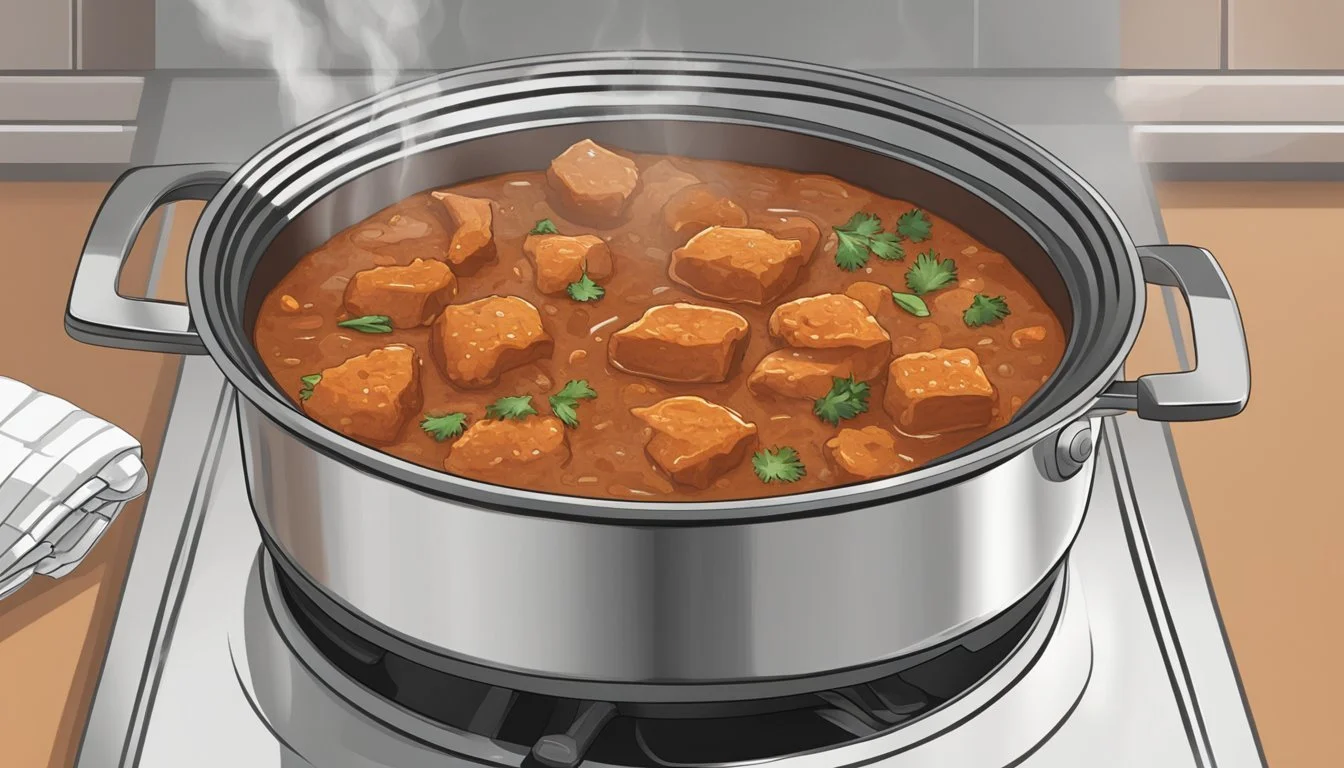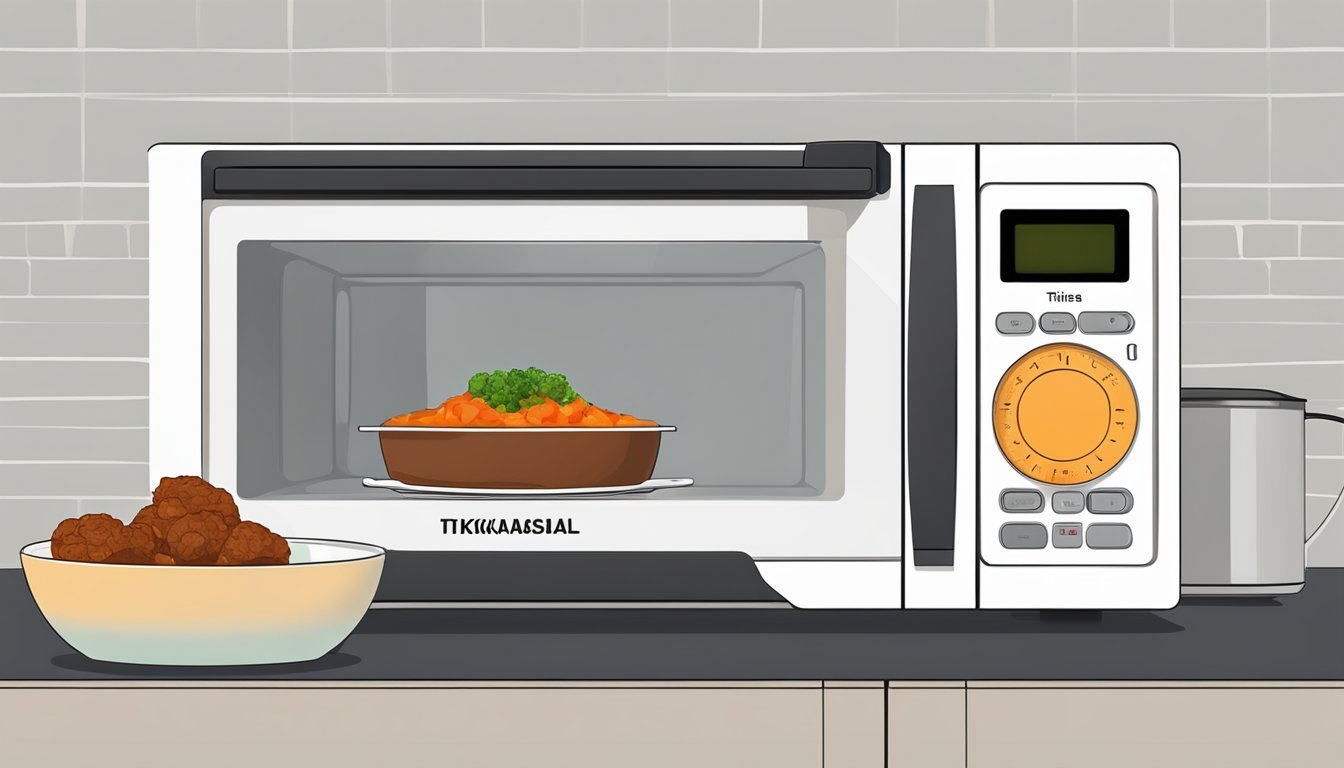How to Reheat Beef Tikka Masala
Expert Tips for Best Flavor
Reheating Beef Tikka Masala can seem intimidating, but it’s straightforward with the right approach. This beloved dish, rich in spices and flavors, deserves careful attention to maintain its deliciousness when reheated.
To reheat Beef Tikka Masala, you can use a microwave, oven, or stovetop for the best results. Each method has its advantages depending on your available time and quantity. Microwaving is quick and convenient, while the oven and stovetop methods ensure even heating and preserve the texture of the sauce and meat.
Understanding these methods is crucial for anyone wanting to enjoy their leftover Beef Tikka Masala as deliciously as on the first day. Keep reading to discover detailed steps and tips for perfectly reheating your meal.
Understanding Beef Tikka Masala
Beef Tikka Masala is a flavorful dish originating from Indian cuisine. It combines tender pieces of beef with a rich, spiced sauce, creating a delightful culinary experience.
The beef is first marinated to absorb the flavors of the spices. Marinade ingredients often include yogurt, ginger, garlic, and a mix of spices such as cumin, coriander, turmeric, and garam masala.
The masala or sauce forms the heart of the dish. It typically starts with sautéing onions, garlic, and ginger. Once soft and fragrant, spices—cumin, coriander, and garam masala—are added.
Tomatoes give the sauce its distinctive base. They are cooked down to combine with the spices, forming a rich tomato gravy.
Various recipes may use cream or coconut milk to finish the sauce, providing a velvety texture. This balances the spices and adds a luxurious touch.
The marinated beef, combined with the sauce, is simmered until the meat is tender and flavorful.
Some versions may also include additional ingredients like bay leaves, cinnamon sticks, and cardamom pods during cooking to deepen the flavor profile.
Traditional accompaniments include naan bread, roti, chapati, or rice, which perfectly complement the rich and creamy sauce.
Beef Tikka Masala is celebrated for its harmonious blend of spices and its creamy, tomato-based sauce. The marinating process and careful selection of spices make it a standout dish in any Indian cuisine repertoire.
Initial Preparation Before Reheating
Before reheating beef tikka masala, it is essential to ensure proper initial preparation.
Refrigeration: Store any leftovers in the refrigerator promptly. Ideally, refrigerate the beef tikka masala within two hours of cooking to prevent bacterial growth.
Airtight Container: Use an airtight container for storage. This helps in retaining the flavor and moisture. Additionally, it prevents the beef tikka masala from absorbing other odors present in the refrigerator.
Portioning: If possible, portion the beef tikka masala into smaller serving sizes before refrigerating. This makes reheating easier and more effective.
Inspection: Before reheating, check the beef tikka masala for any spoilage signs. Look for odd smells, discoloration, or changes in texture. Ensuring the leftovers are still good to eat is crucial.
Preparation Area: Make sure your reheating area is clean. This includes the microwave, oven, or stovetop. Any residues from previous meals can alter the taste of your beef tikka masala.
Following these steps will help ensure that your beef tikka masala retains its delicious flavors and is safe to eat when reheated.
Optimal Reheating Methods
Understanding how to reheat beef tikka masala effectively ensures that its texture and flavor remain intact. Below are detailed instructions for reheating this dish using a microwave, stovetop, or oven.
Microwave Reheating
Microwave reheating is a quick and convenient method. Begin by placing the beef tikka masala in a microwave-safe dish. Cover the dish with a lid or plastic wrap to retain moisture.
Heat the dish on high for 1-2 minutes. If your microwave has a high wattage, check the dish halfway through to avoid overheating. After the initial heating, stir the contents to distribute the heat evenly. If necessary, microwave for an additional 30-60 seconds. The internal temperature should reach at least 165°F (74°C) to ensure it is thoroughly heated. Use short bursts to prevent the sauce from drying out.
Stovetop Reheating
Stovetop reheating offers better control over the consistency and prevents uneven heating. Use a medium-sized saucepan for best results. Place the beef tikka masala in the pan and add a tablespoon of water or stock to restore any lost moisture.
Heat the dish on low heat, stirring occasionally to prevent sticking. Allow it to simmer gently for about 10-15 minutes. Stirring helps maintain an even heat distribution and consistency. Keep an eye on the sauce to ensure it doesn't scorch. Heating on low allows flavors to meld back together without compromising the texture of the beef.
Oven Reheating
Oven reheating is ideal for larger quantities and ensures even heating. Preheat your oven to 350°F (175°C). Transfer the beef tikka masala to an oven-safe dish. Cover the dish with aluminum foil to keep the moisture inside.
Bake for about 15-20 minutes. Check the internal temperature to ensure it reaches 165°F (74°C). Using an oven guarantees that the beef warms through evenly, maintaining the dish's texture and flavor. If moisture is a concern, you can add a splash of water or stock before covering with foil.
Each method serves well depending on the amount of time you have and the quantity of food you need to reheat.
Serving Suggestions
To elevate the experience of reheated Beef Tikka Masala, consider pairing it with a variety of sides and garnishes.
Rice Options:
Basmati Rice: Its fluffy texture complements the rich sauce of the Beef Tikka Masala.
Pilau Rice: An aromatic option that adds an extra layer of flavor with spices.
Breads:
Naan: Ideal for soaking up the delicious sauce. Serve it warm for the best experience.
Garlic Naan: Adds a flavorful twist with the addition of garlic.
Garnishes:
Cilantro: Fresh cilantro can enhance the dish with its bright flavor.
Lemon Wedges: A squeeze of lemon over the masala can add a zesty contrast.
Other Accompaniments:
Mint Chutney: Provides a refreshing, minty flavor that balances the spices.
Onion Pakora: Crunchy fritters that add texture and are perfect for dipping.
Using these serving suggestions can make reheated Beef Tikka Masala taste just as delicious and satisfying as when it was freshly prepared.
Proper Storage Techniques
To maintain the optimal flavor and texture of beef tikka masala, it is essential to store it correctly. Whether you plan to consume it soon or later, here are some effective storage techniques.
Leftovers should be allowed to cool down to room temperature before storing. This approach helps in preserving the dish's quality.
Place the beef tikka masala in an airtight container to prevent air exposure, which can lead to spoilage. Choose containers with a good seal to maintain freshness.
Refrigerate
Store the dish in the refrigerator if you plan to eat it within 3-4 days.
Ensure that the temperature is set below 40°F (4°C).
Freezing
For longer storage, freeze the beef tikka masala.
Portion out the dish into smaller containers or freezer bags.
Make sure to remove as much air as possible from the bags to prevent freezer burn.
Troubleshooting
Sauce Separation: If the sauce separates during storage, stir it well before reheating. If reheating and you notice separation, a bit of cream or yogurt can help re-emulsify the sauce.
Tips
Label containers with the date of storage to keep track.
For best results, consume frozen beef tikka masala within 2-3 months.
These methods ensure your beef tikka masala stays delicious and safe to eat for future meals.
Maintaining Quality and Safety
Proper reheating of Beef Tikka Masala is crucial to ensure both quality and safety. Always ensure that the internal temperature reaches 165 degrees Fahrenheit or 74 degrees Celsius to kill any harmful bacteria.
Storage
Store the leftovers in an airtight container in the refrigerator within 2 hours of cooking. This step is vital to prevent spoilage. For longer storage, freeze the Beef Tikka Masala in freezer-safe containers.
Reheating Methods
Different reheating methods can affect the quality:
Microwave:
Place Beef Tikka Masala in a microwave-safe dish.
Cover with a lid or plastic wrap.
Heat on high in 30-60 second bursts, stirring in between.
Stovetop:
Use low to medium heat.
Stir occasionally to avoid sticking and uneven heating.
This helps maintain the sauce’s creamy texture.
Oven:
Preheat the oven to 350°F (175°C).
Transfer to an oven-safe dish.
Cover with aluminum foil.
Heat for about 15-20 minutes.
Food Safety Tips
Always check the internal temperature. It must be at least 165°F.
Avoid reheating more than once to reduce risk of bacterial growth.
Discard any Beef Tikka Masala left out at room temperature for more than 2 hours.
Spoilage Indicators
Smell: A sour or off odor can indicate spoilage.
Texture: A slimy or mushy texture is a bad sign.
Appearance: Look for any unusual discoloration.
By following these guidelines, one can enjoy Beef Tikka Masala safely and at its best quality.
Side Dishes and Pairings
Pilau Rice is a popular choice; its fragrant spices complement the rich flavors of beef tikka masala. Naan Bread is another classic pairing, perfect for scooping up the savory sauce.
Raita, a yogurt-based condiment, offers a refreshing contrast to the spiciness. Made with cucumber, onions, and mint, it provides a cooling effect.
Aloo Gobi, a dish featuring potatoes and cauliflower, adds a hearty vegetable element to the meal. The mild spices of aloo gobi balance well with the bold flavors of the tikka masala.
For a spicier kick, chili powder can be added to spiced peas or cabbage stir fry. These dishes enhance the meal with a touch of heat and additional texture.
Garlic Naan or butter naan can also be served, adding an extra layer of richness. Their buttery, garlicky notes make perfect partners for scooping up every bit of the delicious sauce.
Cinnamon-spiced Sweet Potatoes offer a sweet and warming side, contrasting beautifully with the savory tikka masala. The hint of cinnamon adds a pleasant aromatic depth to the side dish.
Coconut milk rice pairs well too, as the creaminess of the coconut milk compliments the rich sauce of the beef tikka masala.
These side dishes and pairings not only elevate the dining experience but also provide a balance of flavors and textures to complement the hearty beef tikka masala.
Enhancing the Flavor After Reheating
After reheating Beef Tikka Masala, several steps can elevate its flavor.
Start by adjusting the seasoning. Adding a pinch of sea salt can boost the taste. Mix well to ensure even distribution.
Incorporate fresh or additional spice mix to rejuvenate the dish. Ground spices like cumin, coriander, and garam masala can intensify the aroma and taste.
Creamy tomato sauce can be added to maintain the dish's richness. Stir in a bit of fresh sauce to keep it moist and enhance the creaminess.
Fresh, fragrant herbs such as cilantro enhance the flavor profile. Sprinkle chopped cilantro on top before serving.
Tip: Serve with naan or basmati rice to complement the flavorful beef and blend of spices.
These simple steps ensure your Beef Tikka Masala remains as delightful as freshly cooked.
Health and Nutritional Considerations
Reheating beef tikka masala involves several health and nutritional aspects. Firstly, ensure that the beef is reheated to a safe internal temperature of 165°F (74°C) to avoid foodborne illnesses.
Ingredients such as beef and sauce, when reheated, can retain their nutritional value. Consider the use of olive oil instead of other fats to promote heart health.
Adding Greek yogurt in the recipe or as a side can enhance the dish's protein content while maintaining its creamy texture.
For a family-friendly approach, consider balancing the meal with vegetables or whole grains. This addition can improve the overall dietary fiber intake.
Ensuring that the reheated beef tikka masala maintains its nutritional integrity yet offers a delicious experience is crucial.








